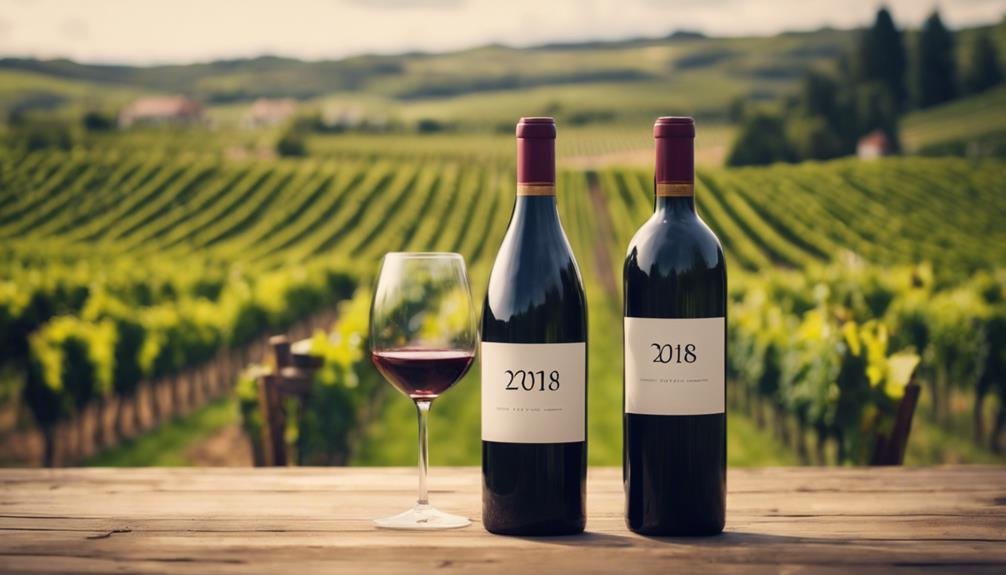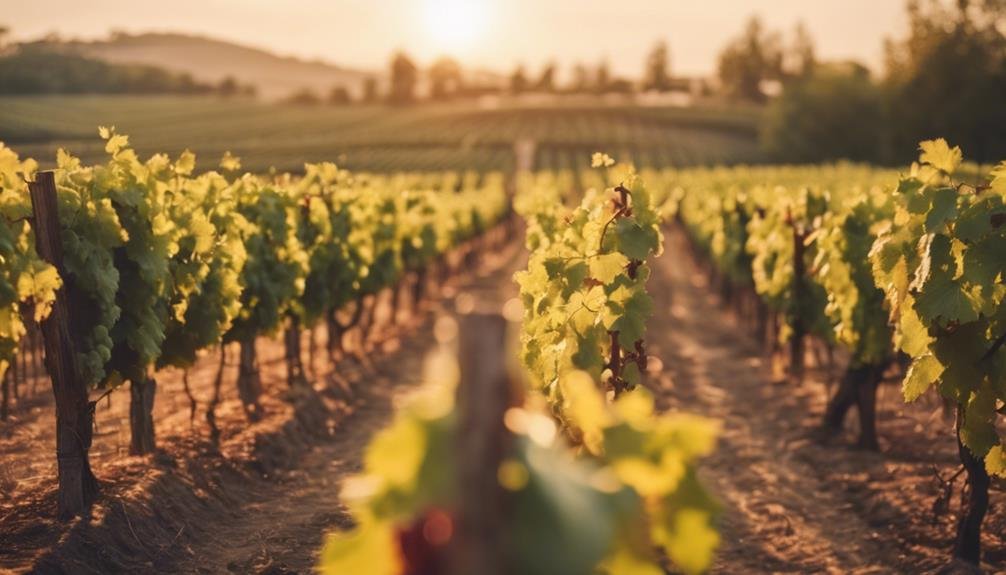Begin an exploration of viniculture, where grape cultivation is key, offering various flavors. Fermentation transforms sugars into alcohol, influenced by soil and climate. Winemakers shape diverse wines through techniques. Wine grapes boast unique qualities, with thousands of varieties available. Harvest time impacts wine quality, while fermentation molds taste. Vintage wines derive from specific years, while non-vintage blends offer complexity. Understanding grape traits and food pairings enhance wine appreciation. Regional influences and blending methods play roles in taste. The intricate world of wine unfolds, revealing a tapestry of flavors and techniques that captivate connoisseurs.
The Essence of Viniculture
Viniculture, the art and science of grape cultivation for winemaking, encompasses a rich tradition dating back centuries. Grape cultivation plays a pivotal role in the production of wine, with different grape varieties offering distinct flavors and characteristics.
The fermentation process, an essential step in winemaking, involves the conversion of grape sugars into alcohol by yeast. This process is carefully monitored to guarantee the desired flavor profile and alcohol content of the wine.
The quality of grapes, influenced by factors such as soil composition and climate, directly impacts the final product. Through the intricate dance of grape cultivation and the fermentation process, winemakers craft the diverse array of wines that grace our tables and glasses, each telling a unique story of tradition and innovation.
Exploring Wine Grapes
Exploring the diverse world of wine grapes reveals a fascinating array of flavors and characteristics unique to each varietal. Grape varietals, cultivated primarily from Vitis vinifera species, offer a wide range of options for winemaking.
Thousands of grape varieties exist within this species, with popular choices like Cabernet Sauvignon standing out. Grape harvest, an essential step in winemaking, determines the quality and flavor profile of the final product.
The ripening process of wine grapes takes a season, with harvest times varying between hemispheres. Following harvest, grapes undergo fermentation, a key process where sugars convert into alcohol, shaping the wine's taste.
Understanding the intricacies of grape cultivation and harvest is essential for appreciating the diverse world of wine.
Understanding Vintage and Non-Vintage

Understanding the distinction between vintage and non-vintage wines is essential for appreciating the nuances of winemaking and the characteristics of different wine blends.
Vintage wines are produced from grapes harvested in a specific year, reflecting the unique environmental conditions of that harvest season. Non-vintage wines, on the other hand, are blends of multiple vintages, allowing winemakers to achieve consistency in flavor profiles year after year.
The blending techniques and aging processes used in creating these wines play a pivotal role in determining their final taste. Regional differences and grape selection further influence the quality and style of both vintage and non-vintage wines, showcasing the diversity and complexity of winemaking practices worldwide.
Deciphering the Taste of Wine
Deciphering the taste of wine involves understanding the interplay of acidity, sweetness, alcohol content, tannins, and aromatic compounds that contribute to the overall flavor profile of the beverage. Acidity in wine can range from tart to mild, influencing its freshness and liveliness.
Sweetness levels vary from bone-dry to very sweet, affecting the perceived taste and balance. Alcohol content in wine typically ranges from 10% to 20% ABV, impacting the body and warmth of the wine. Tannins, particularly found in red wines, contribute to astringency and mouthfeel.
Aromas play an important role in wine tasting, with different notes like fruits, spices, and florals enhancing the sensory experience. Understanding these elements can help in appreciating wine pairings and recognizing distinct flavor profiles in tasting notes.
Delving Into Wine Appreciation

In delving into wine appreciation, a nuanced understanding of the diverse characteristics and origins of different wine varietals is essential. Exploring food pairings can enhance the tasting experience by complementing flavors and textures.
Various wine regions around the world offer unique terroirs that influence the grape cultivation and winemaking processes, resulting in distinct flavors and aromas. Understanding these regions can provide insight into the factors shaping a wine's profile. For example, wines from the Bordeaux region in France often blend Cabernet Sauvignon and Merlot grapes, creating complex and balanced flavors.
Frequently Asked Questions
Can Wine Be Made From Fruits Other Than Grapes?
Fruit wines are crafted through a fermentation process using fruits like apples, berries, and cherries. These alternatives offer diverse flavor profiles outside traditional grape wines, appealing to those seeking unique tasting experiences beyond the usual.
What Factors Contribute to the Differences in Wine Acidity Levels?
The acidity levels in wine are influenced by multiple factors, including soil composition and climate affecting grape varietals. Fermentation techniques also play an essential role in determining the final acidity, creating a diverse range of flavors for enthusiasts to explore.
How Do Winemakers Determine the Alcohol Content in Wine?
Winemakers determine alcohol content in wine through the fermentation process, where yeast converts sugars into alcohol. By controlling factors like yeast strain, sugar levels, and fermentation temperature, they aim to achieve desired alcohol percentage and taste profiles without resorting to distillation methods.
Why Do Some Red Wines Have a More Astringent Taste?
Red wines have a more astringent taste due to higher tannin levels. Tannins, found in grape skins and seeds, create a drying sensation in the mouth. This characteristic varies based on grape variety and aging process, contributing to the wine's unique mouthfeel.
Is There a Specific Wine That Is Recommended for Beginners to Try?
For beginners, a light and approachable wine like Pinot Noir is a great choice. Its tasting notes of red fruit and gentle tannins make it easy to enjoy. Pair with dishes like roasted chicken for a delightful experience.
Conclusion
To sum up, the world of wine is a fascinating and intricate one, with each glass telling a unique story of craftsmanship and artistry. Did you know that there are over 10,000 varieties of wine grapes worldwide? This vast diversity contributes to the rich tapestry of flavors and aromas found in the world of viniculture.
Whether you're a casual enthusiast or a seasoned connoisseur, exploring the world of wine is a journey worth taking. Cheers to the endless possibilities that a single glass of wine can offer.
